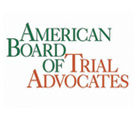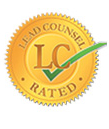With the increasing number of drivers on the road, the risk of being involved in an accident potentially increases. Car accidents in California are fairly common. Most of these have caused victims grievous bodily injuries and loss of life. It is crucial for car accident victims or their loved ones to seek the services of an experienced personal injury attorney, especially if the accident was through no fault of their own.
Experienced Los Angeles car accident attorneys bring on board a wealth of experience when representing car accident victims. Our wealth of knowledge and negotiating skills helps us successfully pursue just compensation for our clients.
Leading Causes of Car Accidents
A variety of reasons can cause a crash. They include driver negligence, unfavorable weather conditions, and vehicle defects, among others. Establishing the cause of the accident is pivotal as it increases the odds of securing just compensation.
Here’s a look at some of the leading causes.
Distracted Driving
Entertaining simple distractions while driving seems to many a harmless engagement. However, the gravity of indulging in a few seconds of distracted driving becomes apparent when a life is lost or another is injured after a crash. Most drivers engage in distracted driving without consciously thinking of the risk it poses to other road users. This is why distracted driving is the leading cause of car collisions.
There are three primary types of distractions, visual, cognitive, and manual.
Visual distractions include all activities that lead you to take your eyes off the road. Some of the more common visual distractions include adjusting radio stations, putting on makeup, operating GPS, texting, observing billboards, looking and reaching out for items in the car.
When your mind wanders when driving, you are experiencing a cognitive distraction. Classic examples include being engrossed in an engaging conversation with a passenger or another through a hands-free device, listening to an audiobook, singing along to your favorite tune, and daydreaming.
Manual distractions are more apparent and easy to establish. It is expected that a driver’s hands should always remain on the wheel. However, short indulgences like retrieving an item from a purse or wallet, taking off a coat, eating, drinking, doing makeup, or hair require the driver to take their hands off the wheel momentarily. That moment, short as it may be, may cause a crash in which you suffer injuries.
Intoxicated Driving
Despite the growing efforts of non-intoxicated driving campaigns, some still drive while intoxicated. Alcohol and drugs are the preferred substances for intoxicated drivers. Both compromise the brain’s functioning, reasoning, muscle coordination and impair the driver’s thoughts.
In an ideal situation, no one should drive with alcohol in their bloodstream. However, California allows for drivers not to exceed a .08% blood alcohol content if they are 21 years or older, .01% for under 21s, and .01% for drivers of any age under probation.
In the case of drugs, the definition of the term drugs includes illegal drugs (like heroin, cocaine, and methamphetamine), legal drugs (marijuana), prescription, and over-the-counter medication. While no driver should get behind the wheel after ingesting drugs that compromise the brain or nervous system, some do. Some deliberately, while for others, it is out of ignorance. Legally, there is no set limit for driving under the intoxication of drugs, as is the case in driving under the influence of alcohol. However, drug experts can assess the extent of the driver’s impairment.
Drugs and alcohol-related driving continue to escalate car collisions and the related injuries and fatalities associated with the crashes.
Drowsy Driving
Drowsy driving accounted for 697 deaths of the drowsy-driving-related collisions in 2019, according to the NHTSA. Drowsiness is often an overlooked problem, but the statistics point to the catastrophic consequences drowsiness can lead to.
Driver fatigue or undiagnosed sleeping disorders are top actors that lead to drowsy driving. Driver fatigue can be caused by general tiredness, especially if you have been on the road for long, had fewer hours of sleep, or participated in energy-intensive activities before going behind the wheel. Commercial drivers and employees on long shifts or those rotating shifts are the common culprits.
Drowsy driving may lead to drivers missing exits, sleeping behind the wheel, navigating in the wrong lane, drifting to avoid hitting or hitting rumble strips. All these significantly increase the risk of causing a car crash.
Reckless Driving/Aggressive Driving
Some drivers engage in driving patterns oblivious of the risks they pose to other road users. You have drivers who tailgate, run red lights, brake-check other motorists, among other behaviors. In the recent past, new risky behaviors have emerged. The surging interest in recreating driving experiences witnessed on tracks, events, or movies has inspired some to perform wheelies, burnouts, drifting on public roads, or in unauthorized areas like parking lots.
While those arrested face possible jail time, fines, license suspension, and revocation, this has not deterred aggressive and reckless driving behavior. Many have suffered significant injury and death because of collisions born of such behavior.
It is widely agreeable that the aforementioned behavior shows disregard for human life and reckless endangerment of other road users. However, thrill-seekers and angry drivers that result in road rage to ‘teach another driver a lesson’ are a growing concern.
Speeding
Speeding as a risk factor refers to driving beyond the recommended speed limits. The speed limits vary depending on the environment. Going beyond 25 MPH in most residential and business districts as well as school zones is illegal. For most highways in California, driving beyond 55 or 65 MPH is illegal.
The speed limits are set based on the potential risk to human life and property. Many drivers fail to appreciate this fact. They falsely believe the speed limits are an affront to their driving competence. Thus many drive beyond the recommended speeds.
Speeding has far-ranging consequences, some of which are not appreciated. They include:
- Significant potential for loss of the car’s control
- Reduction of the effectiveness of an occupant’s protective equipment
- Increased stopping distance once the danger is apparent to the driver
- Increased degree of the severity of the crash and ultimately the injuries suffered by the victims
Different drivers have varying reasons for speeding.
-
Beating Traffic
Ideally, to beat traffic, you have to be on the traffic-prone stretch before the rush hour. However, many drivers wrongly believe that speeding while incorporating other aggressive driving maneuvers is the way to beat traffic.
-
Running Late
Most drivers blame lateness for their speeding. They have to rush from home to drop off their kids at school and make it on time for work, among other reasons. While the COVID pandemic forced many companies to adopt work-from-home policies, many drivers still fall behind schedule.
-
Thrill Seeking
A rising population of young adults has adopted speeding as a thrill-seeking option. They often purchase sports cars or tune their vehicles to achieve sport-car performance capabilities. A few individuals speed on highways during the day. Nonetheless, most meet at night in groups to race and outdo each other. While there is considerably less traffic at night than during the day, the risk to road users is no less.
Improper Turning
Traffic signs, traffic lights, turn signals, turning lanes are all designed to prevent accidents. Be that as it may, drivers frequently ignore these safeguards with tragic consequences. Other road users can only know what direction another intends to go if they use their turn signals or enter junctions using the right lane while making the right turn.
Further, stop signs draw the driver’s attention to the environment and the need for caution. You’ll have them at pedestrian crosswalks, residential or school districts, or on major roads to alert drivers of what they need to pay close attention to. Drivers ought to exercise patience and yield when required to, which sadly, most don’t.
Vehicle Defects
Vehicle manufacturers and distributors bear the responsibility of guaranteeing the safety of their cars before introducing them to the public. Rigorous testing and use of quality, industry-approved car parts are expected as the norm. The reality is a company’s bottom line drives most car manufacturers’ decisions. That is why it is common to have defective vehicles in the market.
Most of these defects are known by the public owing to reports from consumers. Sadly, these defects are realized after car collisions where victims either suffered severe injury or died. Vehicle defects include overheating engines, failed braking systems, design flaws in the acceleration systems, and improper/delayed/failed deployment of safety features like airbags.
False marketing is included in the vehicle defects marketing strategy. For example, Tesla misled the public about the capability of the self-driving feature in their vehicles. Many drivers assumed the auto-pilot feature meant their attention could be diverted elsewhere other than on the road. Some were reported to have slept or engaged in other activities like watching films. When there was growing concern about the fatalities and injuries related to Tesla’s autopilot, Tesla issued a disclaimer, and the government took action.
Further, it is expected that vehicles are routinely serviced to enhance the safety of their passengers and other road users. Failure to properly service vehicles increases the likelihood of malfunctions that ultimately result in car collisions.
Teen Driving
Car accidents attributed to teens is a growing concern. An average of 2,400 teens aged between 13 to 19 years died in road crashes. Those injured during the same period averaged 258,000.
These figures suggest seven teens aged 13 to 19 years died every day, with hundreds more suffering injuries.
Several factors contribute to teen-driving accidents. Top among them is their driving inexperience, their lack of situational awareness, and error in critical judgment required in dangerous situations like driving in snowy conditions. The activities below best explain contributing factors to teen-related accidents.
- Speeding — For most teens, speeding is a thrill-seeking experience.
- Distracted driving — The use of phones while driving is prevalent among teens. Texting and receiving calls are the more common forms of phone use. In the recent past, conducting live sessions on social media platforms while driving has become a new and growing form of phone use among teens.
- Driving under the influence — Drug and alcohol use among teens is high. With impaired judgment, these teens falsely believe they can competently drive in their state. The retaliation of their error in judgment is manifested after a car crash.
- Failure to use seat belts — Older drivers exercise more caution than teen drivers. Using seat belts before beginning a journey is one of the precautions adults are keen on. Some teens tend to avoid using seat belts, thus increasing their risk of injury in the event of a crash.
Inclement Weather
Rain, ice, and snow compromise traction. This, in turn, causes vehicles to hydroplane, dangerously skid or spin out when braking. Caution is required in these situations, one that is often ignored by most drivers. Most accidents that occur under inclement weather conditions are avoidable if drivers exercise caution.
In recent years, the weather patterns have drastically changed. We now experience intense weather conditions. Summer temperatures, for example, have gone up by three degrees (F) in the last century. With it, among other effects, is intense forest fires. The fires then create intense smoke that reduces visibility. Even while exercising caution, accidents are almost assured due to poor visibility.
Road Defects
Additionally, road defects cause crashes—potholes and inadequate signage top the list of defects that contribute to accidents. Driving through a pothole may damage vehicles and increase the potential of losing control or suffering a blowout. Both factors could lead to a crash. Further, a sign may be missing to warn you to proceed with caution, for example, a missing sign warning of rumble strips ahead. In other instances, the rumble strips may be too steep. Hitting them then results in the loss of control of the vehicle, thereby causing a crash.
Road Construction
Road construction and repairs are a constant undertaking by the state and federal governments. Part of their duty while maintaining and constructing the roads is safeguarding the road users. Proper signage, erection of cones and barrels, and direct traffic accordingly are all safety measures they should have in place. When these safeguards are misplaced or tampered with, road users are at risk of being involved in collisions. Further, their machinery and the debris also contribute to accidents.
What You Should Do After an Accident
After an accident, the first step should be to ascertain your well-being, that of your passengers, and other victims in the crash. You should then call the police and request emergency assistance. Police reports are critical evidence when processing vehicle accident claims. Legally, you should not leave the accident scene. However, with one exception, seeking medical attention. Some injuries require emergency medical attention. You, therefore, will not be punished for leaving the scene in pursuit of treatment.
Additionally, you need to exchange insurance information with the other driver(s), their contact details, and full names. Eye witness accounts are also critical pieces of evidence. You should, therefore, take their contact details for it to be easier to get a hold of them for their testimony. Additionally, taking photos or videos of the scene will prove beneficial when seeking a claim.
While it may not be possible to effect all the recommendations above on your own, especially if you are gravely hurt, it is crucial to engage a personal injury attorney. You can call them or have another call them as soon as is reasonably possible. The personal injury attorney’s team conducts independent investigations and collects the required evidence needed for your case. Based on their report combined with the police report, the cause of the accident will be determined.
Establishing the cause of the accident helps determine the party that bears responsibility for the crash. Based on this, your attorney can then best advise you on the steps to take.
Finally, you will receive a call from an insurance claims adjuster shortly after the crash. It is standard practice. However, do not engage the adjuster without legal representation. Most insurance companies engage car crash victims early to force them into a payout. Victims who agree to a settlement this early on and without legal representation later learn that their payout was less than ideal. Their rushed decision, owing to their emotional state or condition while recovering from sustained injuries, proves beneficial for insurance providers.
Experienced personal injury attorneys understand the manipulation tactics used by insurance companies. Further, they better understand the claim process and all factors to be considered before making a claim.
Contact an Experienced Los Angeles Car Accident Attorney Near Me
It is in your best interest to hire car accident attorneys that help the injured secure just compensation. Being involved in a car accident is overwhelming emotionally and financially. You need compensation that shields you from the financial burden of medical treatment or loss of income if the injuries you sustained affect your ability to work. Los Angeles Car Accident Attorney is prepared to help lit the burden and pursue just compensation. Give us a call today at 424-237-3600.






